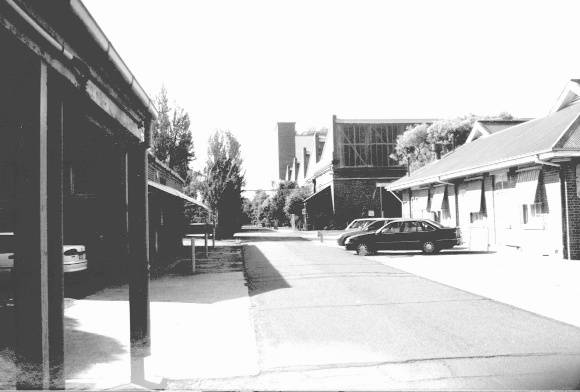| Back to search results » | Back to search page » |
|
ICI Leathercloth Factory
LocationStation Road, DEER PARK VIC 3023 - Property No 9
File Number1982LevelIncluded in Heritage Overlay |
|
Statement of Significance
Individual place statement of significance::
Nitrocellulose, produced from a reaction of cellulose fibre (guncotton) and nitric acid was one of the first multi-use synthetic materials, having application to explosives, aircraft fabric dope and waterproof cloth. The manufacture of 'Leathercloth', a trade brand of ICI Ltd, at Deer Park, was facilitated by the existence of import tariffs and an unusual co-operation between two rival giants in the synthetics industry. DuPont and ICI combined to provide capital and expertise for the plant, although it eventually became Australian-operated under the local subsidiary ICI Australia. The establishment of the plant in Melbourne's western suburbs is a reflection of the needs of automobile manufacturers in Geelong and Port Melbourne for a new material for the cars which were coming from their factories in ever-increasing numbers.
The ICI Residential Heritage Area is of State historical and architectural significance as a rare and distinctive company township and for its association with the nineteenth century origins and twentieth century expansion of the former Nobel (later ICIANZ, now ORICA) factory which became the major private manufacturer of explosives and munitions in Australia.
The estate, initiated by Leathercloth Pty. Ltd., (a subsidiary of Nobel) is one of a number of company sponsored housing schemes in the Brimbank municipality and reflects a pattern of development where nationally important industries established in green-fields sites beyond the urban fringe and so needed to provide accommodation and other facilities for workers. The inclusion of the recreation reserve in the precinct and the adjacent separately listed Deer Park Hall, and Hunt Club Hotel (a former ICI training centre) further demonstrate the company role in local planning and development.
The precinct is significant for its association with the largest explosives, chemicals and plastics manufacturer in Australia, originally established here under the importer Jones Scott and Co in the 19th century, and then becoming the Australian Lithofracteur Company (Krebs Patent), a rival to Nobel's dynamite patent, and in production in Australia only a couple of years after Nobel's Ardeer factory was opened. It later merged with the Nobel company and then became ICIANZ before the most recent change to ORICA.
This important industry played a major role in mining through the development of progressively more efficient and safer explosives. It also contributed to wartime production in ammunition, initiators and in World War Two, the development of synthetic ammonia production and construction of the Defence Explosives Annexe No 5 (later the Albion Explosives Factory). The Leathercloth plant was influential in the development of synthetic materials for the motor industry including vinyl seat fabrics and hoods, and has continued to play an important role in synthetic fabrics.
The houses in Station Road, Ballarat Road, Hume Street and Hyde Street reflect a sequence of development in their distinctive styles and forms, reflecting the colonial origins of the company in their Indian Bungalow forms as well as giving insight to the social and economic status of their proposed occupants with the larger and more elaborate houses intended for factory managers. The inclusion of concrete houses in the estate also points to the innovation in building in the later period, possibly as a response to war-time material shortages.
The recreation reserve and contemporary (but altered) pavilion are significant in demonstrating the role of the company in providing community services to their workers, and as evidence of the urban design and landscape approaches to company housing in the period.
Group
Manufacturing and Processing
Category
Factory/ Plant




